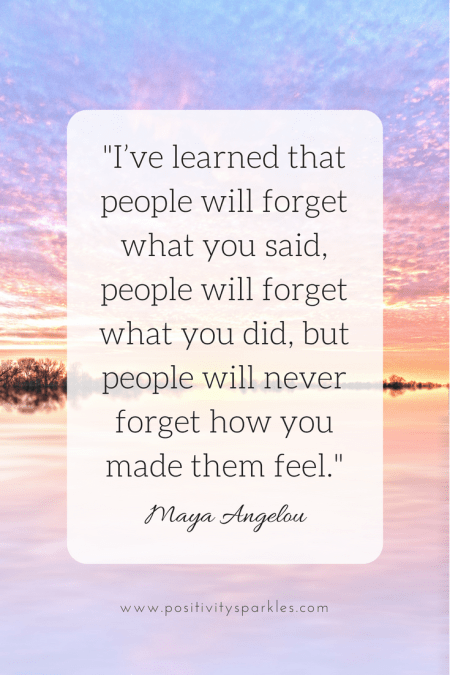People will never forget how you made them feel – the power of communication
An area where I received energy in my corporate life was in designing and developing communications for leaders and teams. What I have learned is that being able to communicate effectively is perhaps the most important of all life skills. And a skill that we all take nearly a lifetime to master.
I’m sure many theses have been written on the power of communication but in this blog I’d like to offer my tips for harnessing the power of communication in both your business and personal life.
The Oxford Dictionary defines communication as ‘the activity or process of expressing ideas and feelings or of giving people information.’ I love this quote from Maya Angelou which for me encapsulates the real power of communication.
Communication is what enables us to pass information to other people, and to understand what is said to us. It may be verbal, written (printed or digital), visual (using images, logos) or non-verbal (using body language, gestures and the tone and pitch of voice). In practice, it is often a combination of several of these.
You only have to watch a baby listening to its mother and trying to repeat the sounds that she makes to understand how fundamental is the urge to communicate.
Communication is a very powerful tool. We have the power in our communications to make people feel energised, elated, excited, proud, happy but also sad, deflated, dejected, upset, hurt, angry. I could go on.
We also have the power to make people do something off the back of our communication. That may be continuous learning, trying something new, pivot in a new direction or take on a new skill.
Our words (a key communication tool) have the ability to create worlds for those we are communicating to. Just think back to a situation where you were able to visualise an amazing world through somebody’s words to feel how powerful that is.
Tip 1: Know your audience
Communication is a two-way process involving both the sending and receiving of messages. Not understanding the needs, wants and challenges of your audience may result in delivering messages that are misunderstood. No doubt, you will have in mind the actions or reactions you hope your message will prompt from your audience. Keep in mind, your audience also enters into the communication process with ideas and feelings that will undoubtedly influence their understanding of your message and their response. If possible communicate through your audience’s view of the world. You will then come across as more authentic and in touch. Knowing your audience is very important in an interview situation, making a presentation to gain buy in from senior stakeholders, or even in speaking to your family and friends.
Tip 2: Listen completely
Listening skills are an essential part of communication. It is easy to make the mistake of assuming that ‘listening’ and ‘hearing’ are the same.
While hearing is passive, high-quality listening is ‘active’ and involves being engaged with the speaker. This means closely monitoring what the other person is saying, and asking questions as and when necessary.
As a speaker it is also important to listen to your audience. Seek feedback and adjust your thoughts based on that feedback.
Good listening involves a surprising level of concentration and effort. By doing so, you not only hear the other person’s words, but you also pay attention to the tone of voice, the language being used, and also body language. Sometimes you learn more by what is not being said.
“Adults spend an average of 70% of their time engaged in some sort of communication, of this an average of 45% is spent listening compared to 30% speaking, 16% reading and 9% writing.”
Tip 3: KISS (Keep It Simple Stupid)
The KISS principle, “Keep it Simple Stupid”, is a design principle first developed by the Navy in 1960 as a philosophy that most systems work best if they are kept simple rather than made complicated. This same principle should be applied when it comes to developing your communications.
The real art of communication is to keep it as simple as possible and reduce complexity. Try and reduce the amount of jargon you are using both in your verbal and written communication. Focus on the story you want to get across to your audience. Bring it to life visually, use imagery, analogies or anything that will engage your audience. Story telling is a fantastic skill to develop and can enhance both your written and verbal communications.
I specialise in creating connections and joining the dots between every day work and company vision and goals. I bring that clarity of communication and storytelling to my coaching practice. Communication coaching could help if you’re facing a challenge getting your ideas across, need to deliver complex ideas in simple and clear ways, or with more confidence, impact and clarity.
““The single biggest problem in communication is the illusion that it has taken place””
To avoid being in the situation described by George Bernard Shaw, reach out to me for support.

